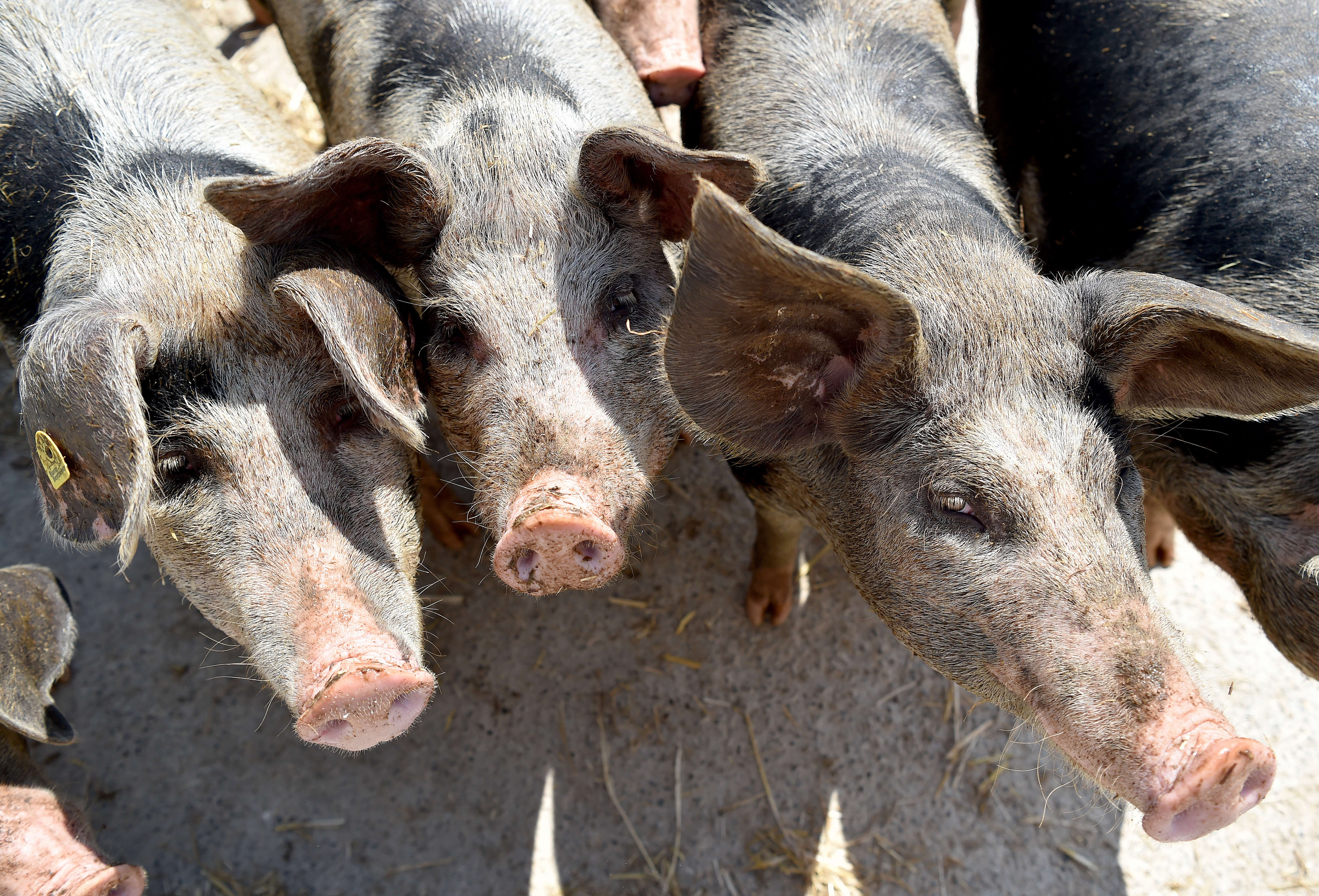Create a free profile to get unlimited access to exclusive videos, sweepstakes, and more!
Elon Musk offers Neuralink progress update with robot surgeons and three little pigs

What has four legs and squeals? Evidently not a little piggie named Gertrude, whom Neuralink founder Elon Musk introduced to the world Friday as one of the first living subjects to show off the upstart company’s fledgling brain-machine interface installed in its noggin’.
Demonstrating a reworked, smaller version of the ambitious device than the one Neuralink (or should we say Neural-oink?) teased when the project was announced last year, Musk showed off three pigs as a test group — one without the coin-sized implant; another that had previously had it installed and then removed (in a show of no evident long-term effects) — and Gertrude, whose snouty rooting around the device was able to detect and display, in real time, on a nearby screen.
While Gertrude wasn’t the most predictable of performers, the company shared some additional footage after the live Q&A broadcast, illustrating in a quick minute how the implant detects her schnozzle’s every touch. For some reason, the boopy musical tones the company selected to indicate the link between Gertrude’s sensory stimulation and her corresponding neural activity sound like outtakes from the soundtrack to The Life Aquatic with Steve Zissou. That’s neither here nor there, but the soothing bleeps and bloops punctuate Musk’s emphasis that walking around with a Neuralink in your head doesn’t seem to diminish your overall happiness:
As you can guess, Twitter followers were oinking to the high heavens after the demo was over. Reactions ranged from comical to incredulously dystopian:
Before we get carried away with out own pig puns, it’s fair to note that there are (or will be) significant ethical questions to crop up as Neuralink gets deeper into development. The device hasn’t yet been installed in a human host, and, as the pig demo showed, it’s still limited to read-only capability. In other words, Neuralink is able to “read” and transmit feedback from the host — but we’ve so far not seen a working version that actually sends stimuli to the host, using the device as the input source.Though Neuralink does plan to develop that key feature, Musk describes the current version as “a Fitbit in your skull with tiny wires,” while explaining that the goal is to make the surgical procedure relatively accessible — as in, a ho-hum bit of outpatient head surgery, only the kind where your attending surgeon is...well, a robot. In the near term, Musk envisions the procedure would be ordered as therapy, touting the device’s potential to mitigate neurological problems that people face as they age.
Of course, having an interface that you can interact with via a Bluetooth-enabled smart phone — especially once it can “write” commands to your brain — has less therapeutic, more fun possible uses as well. Musk floated a number of quality-of-life tasks a more souped-up Neuralink might one day be good for, including “thinking” your Tesla into your driveway like some modern-day horse telepath; playing video games using only your brain as the controller; and even replaying saved memories — which he admitted “is sounding increasingly like a Black Mirror episode.” But he went full sci-fi futurist when he envisioned a hypothetical scenario in which a Neuralink user could, in some far-off time, “potentially download [saved memories] into a robot body.”
We’re not sure these three little piggies would’ve been so cooperative if they’d known that last part ahead of time. But all’s well that ends well (we guess), with Musk saying the next big milestone will be holding small-scale clinical trials with human victims of spinal injury, in order to test Neuralink’s long-term safety, usefulness, and reliability.


























